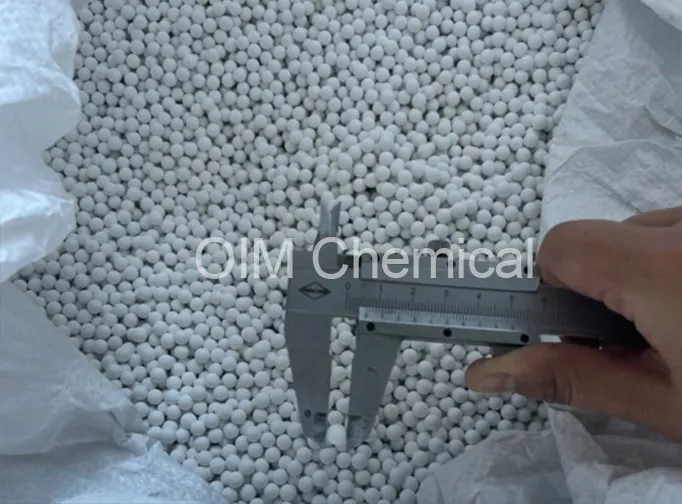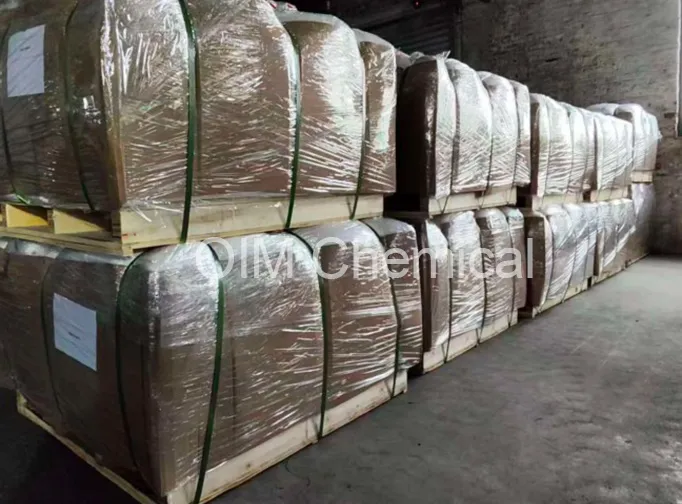Deliver high ceramic alumina balls to Middle East
Time:2025-11-20
In August, one of customer from Middle East sent us request of high alumina balls, and advise it will be used as catalyst support media.
After checking the information, our 99% ceramic alumina balls can meet with request, even some data is much better than requests. We prepared related documents and quote to customer. Thanks for the trust from customer, we come to agreement with distributor relationship and achieved order after deep commucation and professional service.
 |
 |
So what is the role of high alumina balls as catalyst carriers?
1) Catalyst dispersion and activity enhancement
High alumina balls provide uniform loading sites for active components such as precious metals and transition metal oxides through their high specific surface area (150-220m ²/g) and controllable pore size (around 18 Å), reducing the amount of precious metals used while improving dispersion and stability.
2) Mechanical strength and high temperature resistance performance
The mechanical strength of high alumina balls can reach 45-65N/piece, and the compressive strength can reach 78N/mm². Usually for this application, 3mm~13mm are often used. They can adapt to high temperature and high pressure reaction environments (such as petroleum cracking and hydrogenation reactions), reducing the risk of catalyst bed wear and deactivation.
3) Optimization of pore structure
Through techniques such as multi-stage temperature gradient leaching, high alumina balls can form a dense pore structure (pore volume 0.45-0.75ml/g), suppress sintering and coke deposition, and extend the service life of the catalyst.
4) Environmental Protection and Adsorption Function
High alumina balls can adsorb pollutants such as fluoride ions (with a capacity of 6400g/m³) and sulfides, and are used for wastewater treatment and exhaust gas purification. They can also be regenerated and reused by heating (175-400 ℃).
Air adsorption dryers are familiar in the chemical industry, and their core components are adsorbents , such as activated alumina, molecular sieves, silica gel. They adsorb water and gas through a porous structure, and their performance affects the drying effect directly. As the adsorption regeneration cycle progresses, the adsorption capacity gradually decreases and needs to be replaced regularly to ensure stable system operation.
The replacement cycle is usually 3-5 years, but it needs to be adjusted based on the following factors:
1. Frequency of use: High frequency use will accelerate the saturation of the adsorbent, and the cycle needs to be shortened; Long term high load operation will accelerate the decline of adsorbent performance;
2. Environmental humidity: The higher the humidity of the inlet air, the greater the adsorption load and the corresponding decrease in lifespan; High temperature, high dust and other harsh environments may require early replacement.
3. Operating parameters: Abnormal pressure or increased dew point temperature may indicate adsorbent failure.
Meanwhile, during work, it is important to pay attention to the following matters:
1. Monitoring indicators: Regularly monitor the dew point temperature at the outlet, and if it continues to exceed the standard, check the status of the adsorbent.
2. Replacement operation: Thoroughly clean the adsorption tower during replacement to avoid mixing of new and old adsorbents; The filling should be evenly compacted to prevent air flow short circuits.
3. Selection matching: The new adsorbent should be consistent with the prototype number to ensure that the porosity and mechanical strength meet the requirements.
4. Regeneration inspection: After replacement, verify the regeneration effect and confirm that the heating temperature and cooling time are normal.

So how to choose the right adsorbent for an adsorption dryer?
1) Molecular sieve: It is a crystal structure with uniform pore size and strong adsorption ability for water molecules, especially suitable for precision industrial scenarios with dew point below -60 ℃. However, due to its low strength, it is easy to be pulverization under high-intensity compressed air impact, so it can only be used in small quantities in traditional twin tower adsorption dryers.
2) Activated alumina: It is a high-strength adsorbent and the most widely used adsorbent in adsorption dryers currently. It can withstand the high-pressure impact of compressed air without powdering. Excellent performance in moderate humidity environments, suitable for places with dew point below -40 ℃, with a regeneration temperature 30-50 ℃ lower than molecular sieves.
3) Silica gel adsorbent: It’s getting less and less in compressed air drying. It is only suitable for drying at room temperature and is used in pressure dew point environments of -20 ℃.
In terms of drying performance, molecular sieves are much stronger than activated alumina, but the replacement cost is higher. Therefore, before choosing which adsorbent, it is necessary to understand the user's requirements or expectations for dew point, so as to choose the best solution that can meet the user's requirements and reduce the cost of use.
